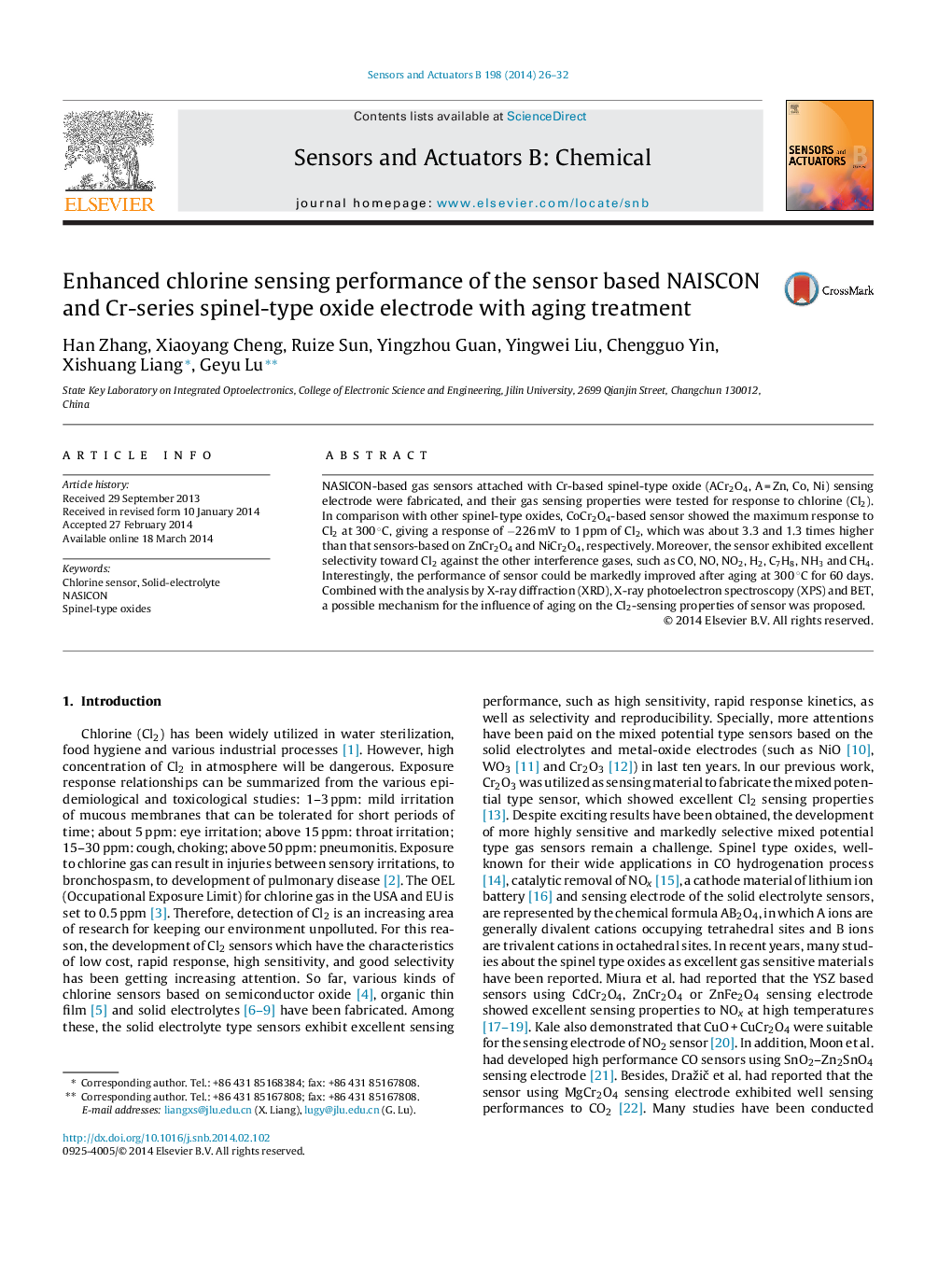| Article ID | Journal | Published Year | Pages | File Type |
|---|---|---|---|---|
| 742784 | Sensors and Actuators B: Chemical | 2014 | 7 Pages |
NASICON-based gas sensors attached with Cr-based spinel-type oxide (ACr2O4, A = Zn, Co, Ni) sensing electrode were fabricated, and their gas sensing properties were tested for response to chlorine (Cl2). In comparison with other spinel-type oxides, CoCr2O4-based sensor showed the maximum response to Cl2 at 300 °C, giving a response of −226 mV to 1 ppm of Cl2, which was about 3.3 and 1.3 times higher than that sensors-based on ZnCr2O4 and NiCr2O4, respectively. Moreover, the sensor exhibited excellent selectivity toward Cl2 against the other interference gases, such as CO, NO, NO2, H2, C7H8, NH3 and CH4. Interestingly, the performance of sensor could be markedly improved after aging at 300 °C for 60 days. Combined with the analysis by X-ray diffraction (XRD), X-ray photoelectron spectroscopy (XPS) and BET, a possible mechanism for the influence of aging on the Cl2-sensing properties of sensor was proposed.
